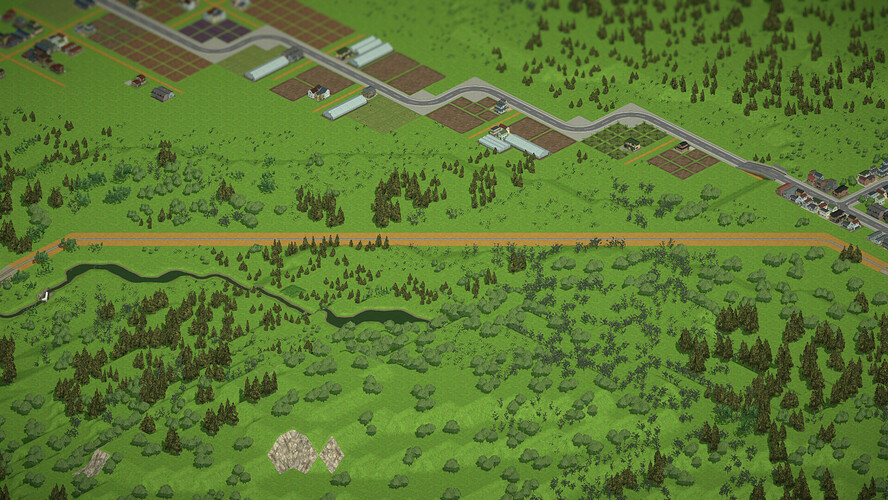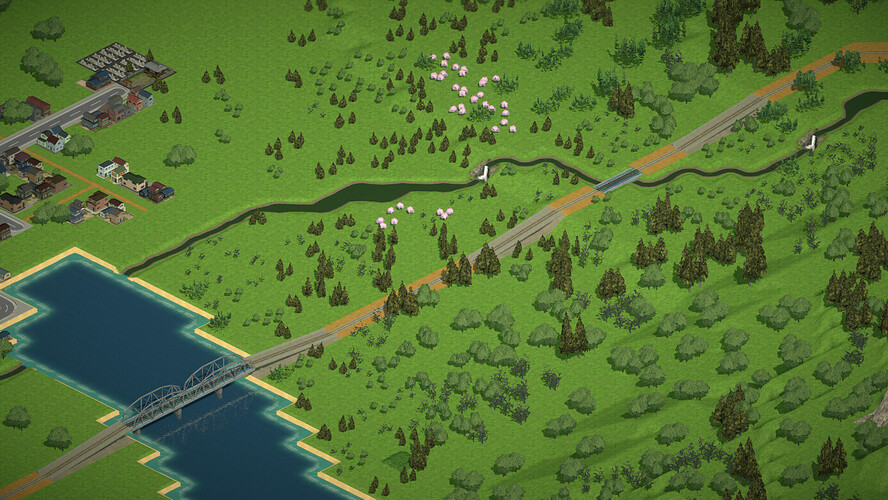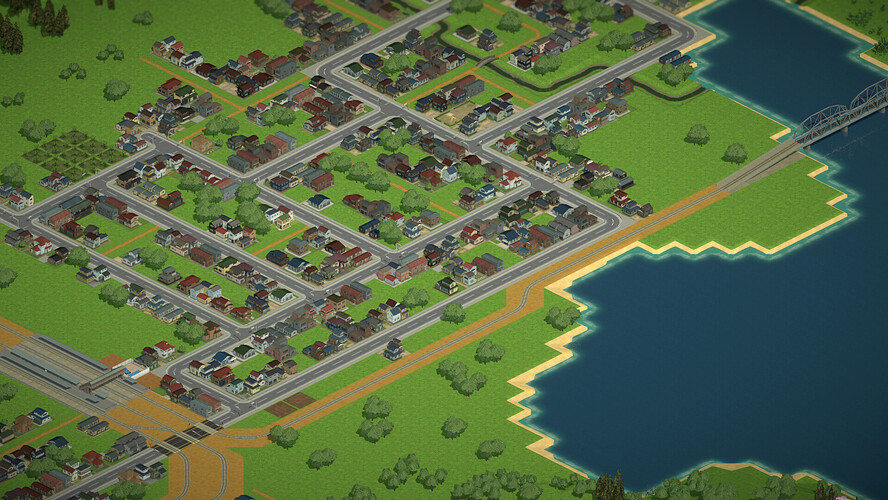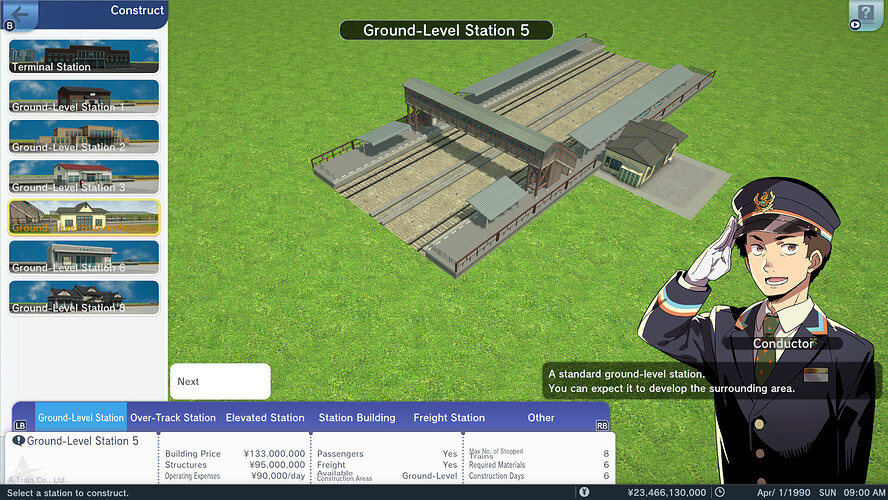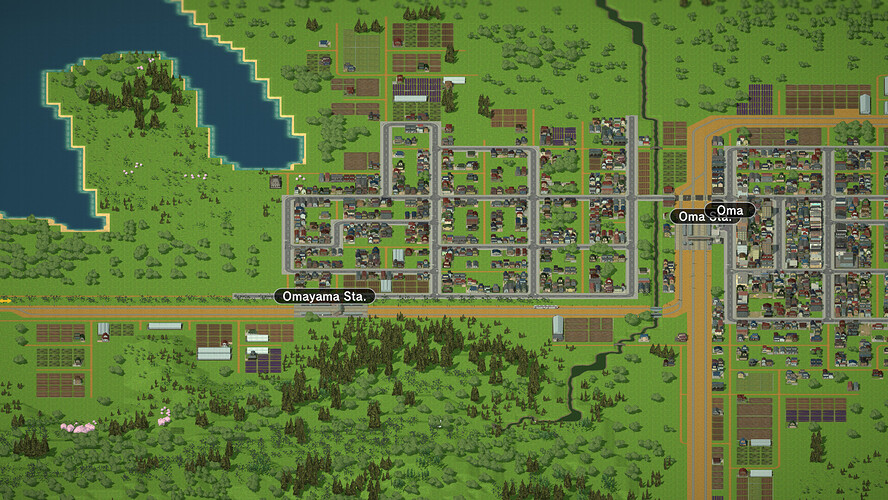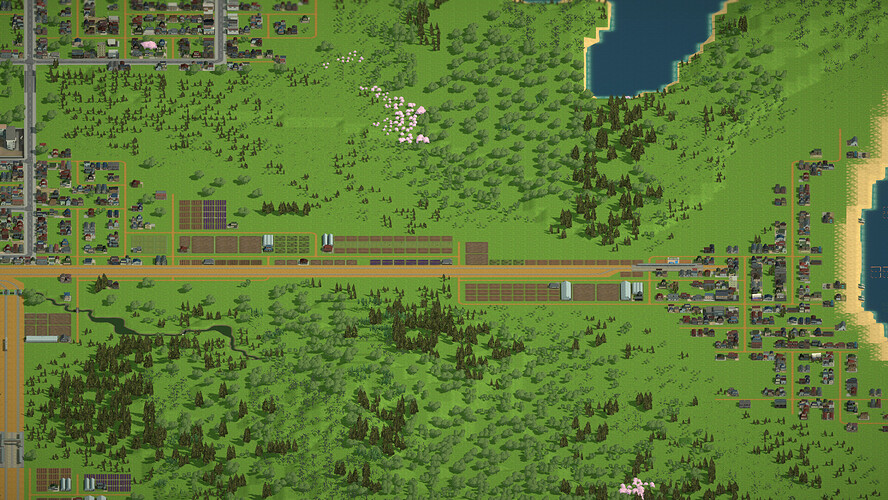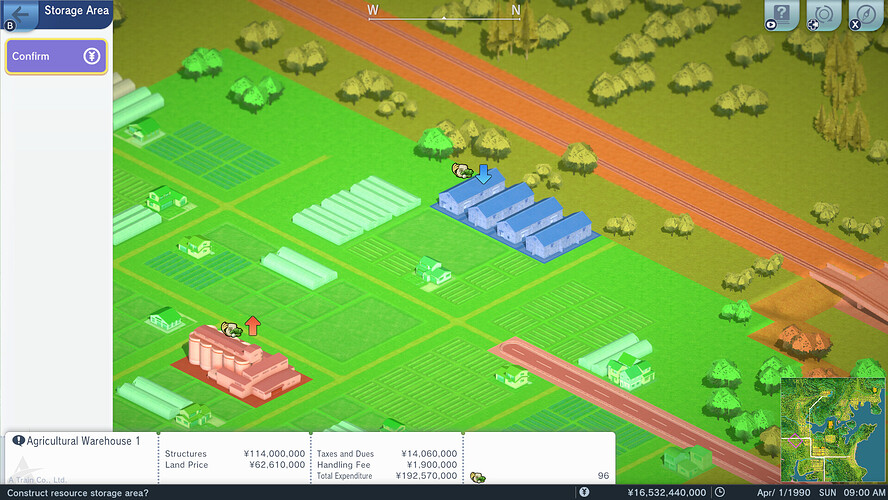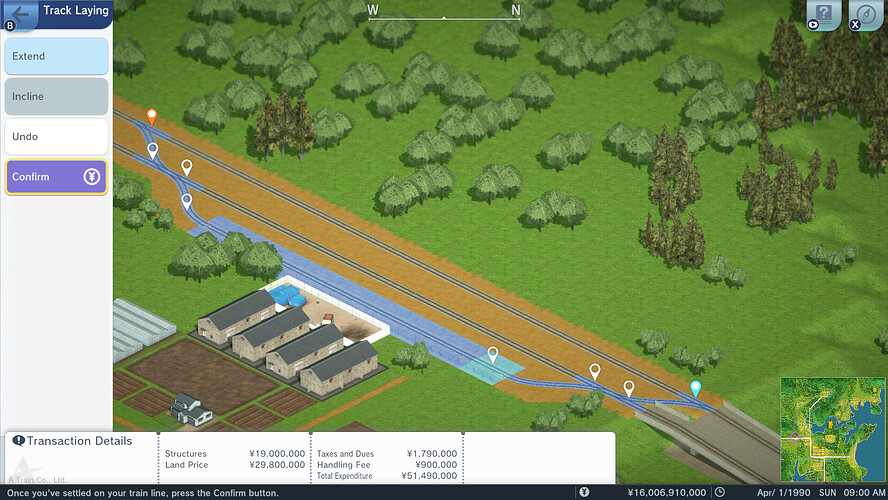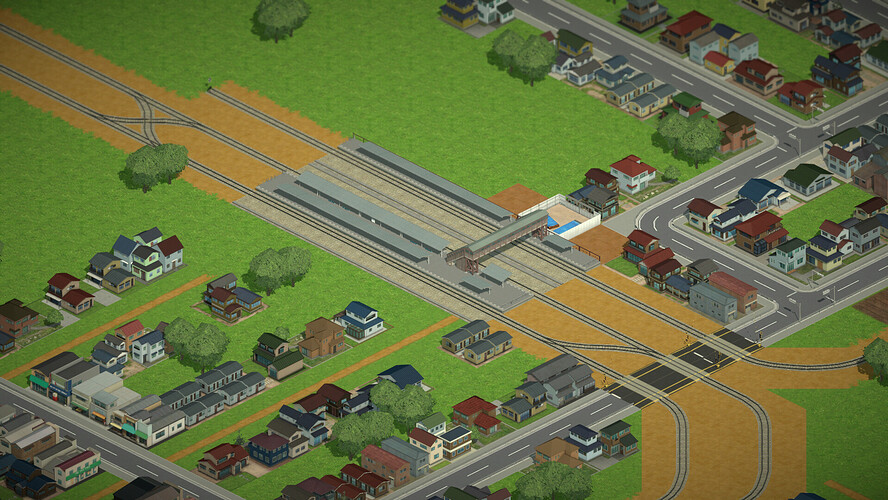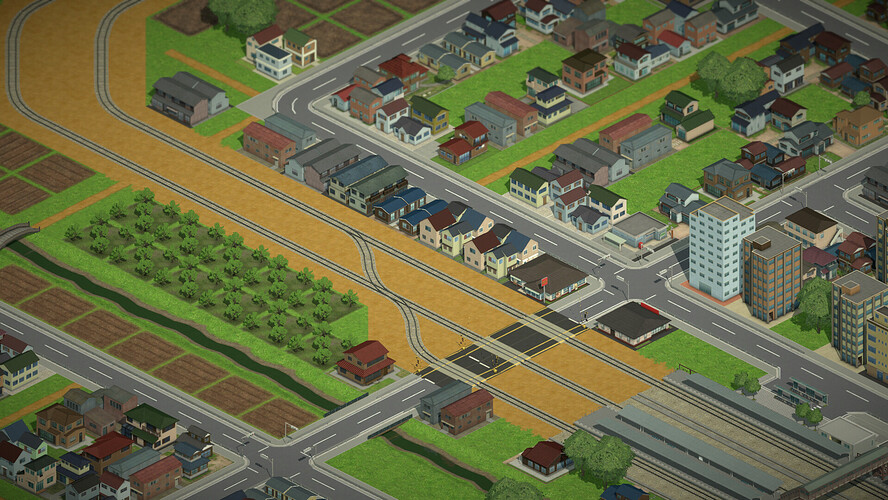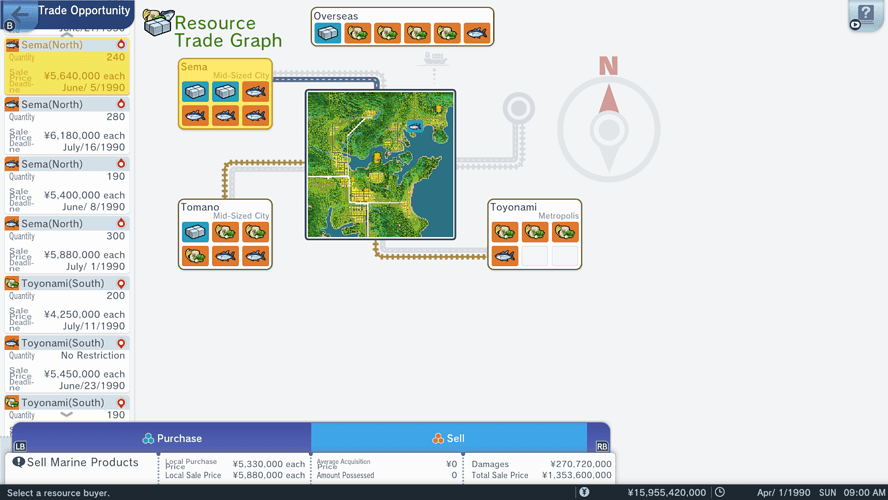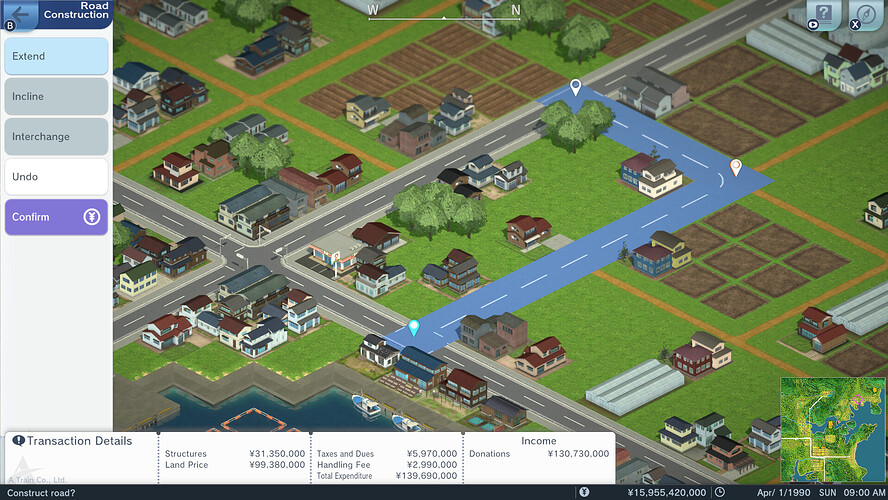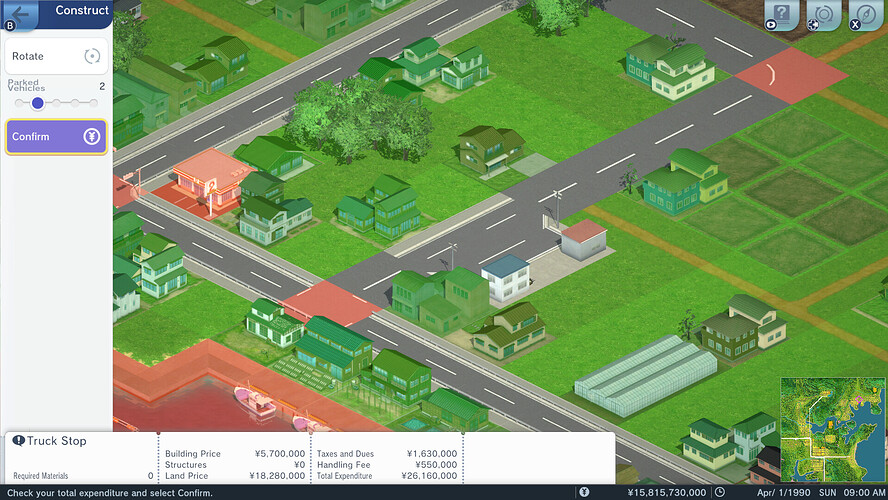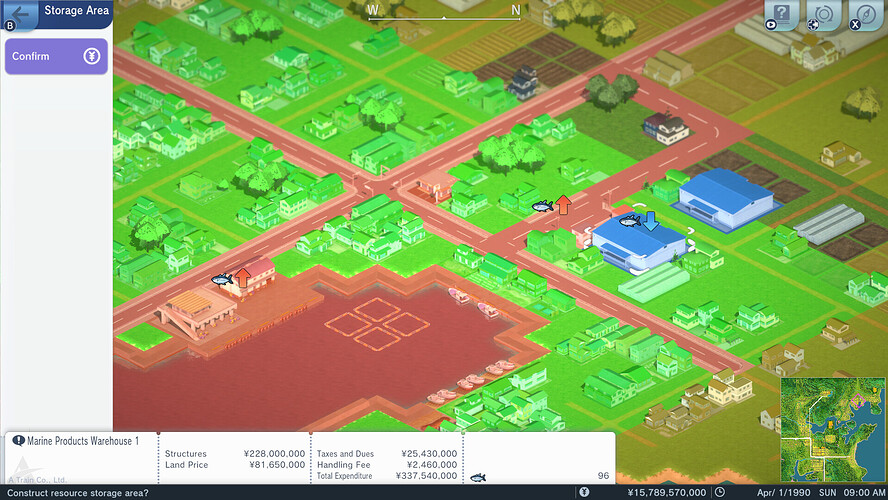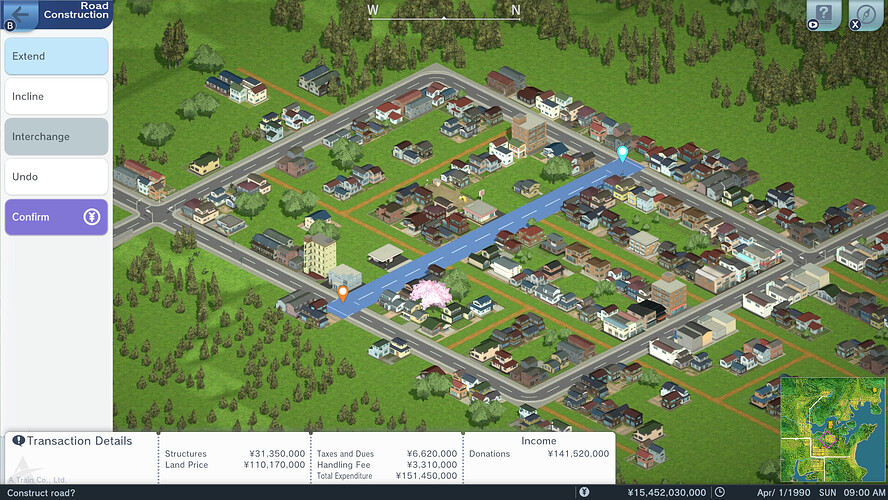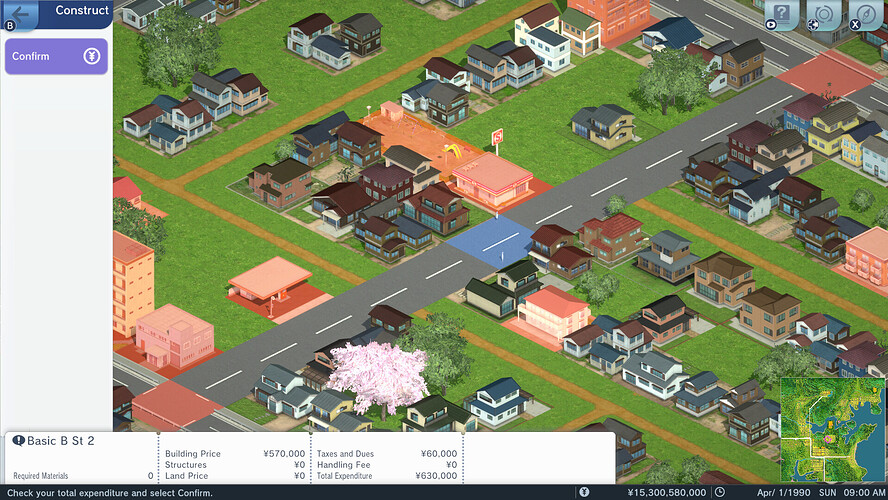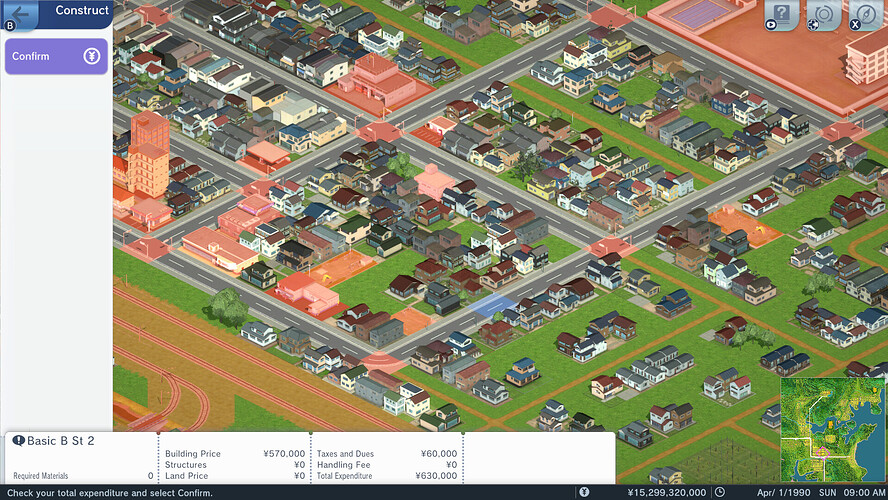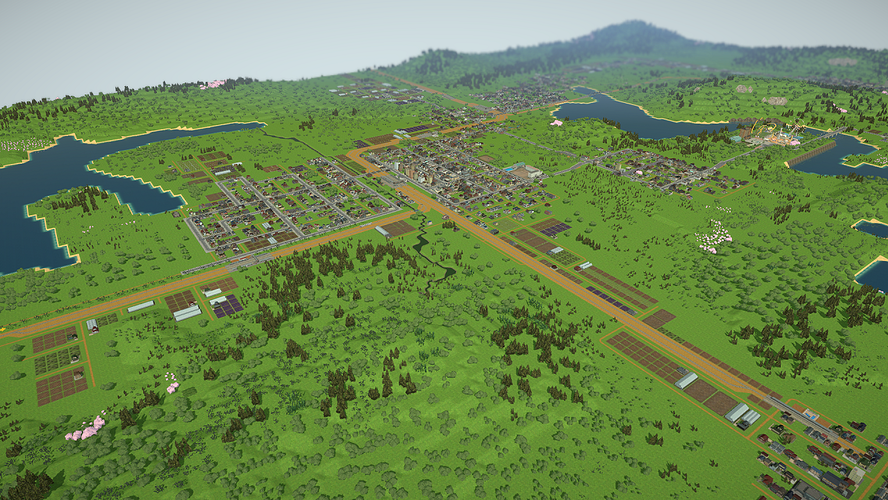Woah boy, time for some massive capital expenditures today. Going to make full use of that business loan building out our transportation infrastructure. Plus we will see how I tackle the thorny topic of building a railway line to Sugio Onsen. Strap yourselves in for another long one…
Today’s scheduled train service leaving for City of Hopes & Dreams is about to depart the station. Please ensure you have finished boarding the train and have your tickets ready for inspection by the conductor!
Let’s Play City of Hopes & Dreams - Breaking ground in Oma town!
Click to reveal...
Welcome back to the PC version of A-Train: All Aboard! Tourism and our Let’s Play of the City of Hopes & Dreams scenario on Standard difficulty. Today’s journal is all about breaking some ground and beginning construction on our company’s proposed business plan. With ¥29,959,520,000 cash in hand our plans are ambitious, so grab your hardhat and high-vis vest because we are about to begin building.
Beginning our tale in the popular tourist destination of Sugio, famous for its Onsen (Hot Spring), our company intends to construct a railway line from Sugio down to a new station located in the Isoya district.
We start out by constructing a new station on the edges of the small town that surrounds Sugio Onsen. As will be custom for every railway station we are constructing or remodelling over the course of today’s journal. Where possible our company will be acquiring the land either side of the station house to allow for future station house expansions.
From there our railway follows the lay of the land, hugging the mountainside in the process, in hopes of keeping the gradient level for as long as possible.
Eventually, our engineers have to tussle with the rugged nature of the landscape and construct some concrete ramps to tackle the changes in height, followed by a causeway across the nearby river, and then top it all off with a multi-arch bridge spanning across the narrow portion of the local bay.
Closing in on Isoya, the railway line skirts the bay before coming to a halt at our new three platform station in the Isoya district. Similar to Sugio Onsen station, the new Shin Isoya station uses the Ground-Level Station 5 template and comes equipped with three separate platforms.
Constructing the railway tracks from Sugio Onsen costs our company just shy of three billion Japanese Yen, coming in at total cost of ¥2,957,070,000. Once the expenses of the station constructions are factored in as well the total cost comes in at over three and a half billion Japanese Yen. A pretty figure for a rugged, scenic railway to the Sugio hot springs.
Continuing our ambitious railway construction plans, our company constructs a double track railway line from the Shin Isoya station to the map border with the mid-sized city of Tomano. Though, to save ourselves ¥500,000,000 the connection to Tomano is only a single track railway line. We do not expect to be running frequent enough services for this to become an issue, and how the railway line functions on the other side of the border is strictly Tomano’s business.
From the Shin Isoya station the double track railway line makes its way via the new two platform station of Omayuki station through to Oma station. Which is being upgraded from a two platform station into a three platform station. Additionally, our company also double tracks the railway line from Oma through to the map border with the metropolis of Toyonami. As a consequence, Omayama station is upgraded from a single platform station to a two platform station so that passengers can board trains traveling in either direction.
To help conserve our capital we retain the existing single track railway connection to Toyonami, saving ourselves approximately ¥3,000,000,000 in forecast demolition and construction costs. Similar to the connection to Tomano, we do not expect to be running frequent enough services for this to become a bottleneck.
Additionally, our company continues construction of the double track mainline through to the seaside town of Ajiro. That concludes the railway passenger focused portion of our construction plans for today, bringing our total capital expenditure so far to ¥13,427,080,000. However, our railway construction plans do not end there, instead our focus now turns to the resources market and hauling freight.
Examining the list of trade opportunities available to our company, located within the Resources screen, we notice that both Tomano and Toyonami are interested in purchasing agricultural products. Additionally, selecting a trade contract for agricultural products reveals the location of an agricultural cooperative. The location of which fortuitously just happens to be close by to our new double track railway line to Tomano,
Before we can trade agricultural products with Tomano and Toyonami we first have to construct some agricultural warehouses. These will store the agricultural products we acquire from the nearby agricultural cooperative. We can choose between two different warehouses types for agricultural products, both warehouse type comes with their own advantages and disadvantages. After examining the respective costs we settle on constructing four buildings of the Agricultural Warehouse 1 type.
We are free to place these anywhere within the green area of influence emitted by the agricultural cooperative. The graphic user interface additionally lets us know that our warehouses are within the accepted distribution range of the agricultural cooperative by displaying that agricultural produce will be transferred from one destination to the other.
Next, our company will construct a freight station adjacent to our agricultural warehouses and our double tracked railway line. For cost purposes, namely a cheaper construction price and lower operating expenses, we choose to construct the Freight Station 1 schematic. Freight stations can acquire freight of any type up to a radius of ten tiles away. Our warehouses being highlighted in blue informs us that they fall within the the accepted freight range of our freight station.
With our freight station now under construction, the moment has come to integrate it into our railway network. This will be a fairly simple task requiring the addition of just a few bits of new railway track and four railway switches. The total expenditure of these minor works comes to ¥51,490,000, bringing our total capital expenditure for the day up to ¥14,004,100,000.
Planning ahead for the possibility of routing trains onto different sections of our railway network, installed railway switches near the Shin Isoya and Oma stations during the earlier construction process.
Going back to consult the Trade Opportunities screen, we notice that the mid-sized city of Sema to our north is seeking to purchase marine products. Additionally, the the fishing harbour is located within and close to the border with Sema. Thus, with a road connection to Sema already in existence, this looks like a good, and cheap, opportunity to earn some extra revenue via some lorries.
Piggybacking off the existing local road network, our company constructs a new road to situate our truck stop on. No need for us to demolish the existing houses, at potentially great expense, when we can just add to the local road network and build in the open spaces. The total expense of the roadworks comes to ¥139,690,000, rising to ¥139,730,000 once the cost of donations to the local government is factored in.
Next, we construct a truck stop nearby to act as a loading bay for our lorries. It is decided that we will outfit the truck stop with two loading bays for now, with the option to retrofit a third at a later date if required.
Finally, our company constructs two marine product warehouses nearby to acquire and storage marine products from the nearby fishing harbour. Once again, we are offered the choice between two different types of marine product warehouses. Similar to the situation with the agricultural warehouses, we opt to go with the first option provided to us, Marine Products Warehouse 1, based on the expected expenditure.
To conclude our ambitious construction plans for today we are going to expand the reach of our bus service from Oma to Iberia Land. To help facilitate this we will first construct a road through the middle of old Isoya town.
Once that is completed we will then construct a two-way bus stop at roughly the middle point. Thus, ensuring a good catchment area for the stop and allowing passengers to board and alight our buses in either direction.
Afterwards, we will build two new two-way bus stops in the township of Oma. The first bus stop will be constructed adjacent to the school. Which will be a popular destination for many of our potential passengers.
Our second bus stop we will construct further down the road, closer to our railway tracks, in what we will term East Oma. Since our company’s Oma to Iberia Land bus service travels these roads we might as well seek to benefit from it by expanding our catchment areas.
Alas, that brings us to the end of our second entry in this reboot of Let’s Play City of Hopes and Dreams on the PC version of A-Train: All Aboard! Tourism. Over the course of our journey we spent a total of ¥14,660,830,000 and established the roots for a significant transportation network. I dearly hope you can join me next time as we acquire some new vehicles to operate our planned services, ponder building a subsidiary or two, and maybe finally set time in motion.
Until we next meet aboard the A-Train, I wish you a safe and prosperous journey!

